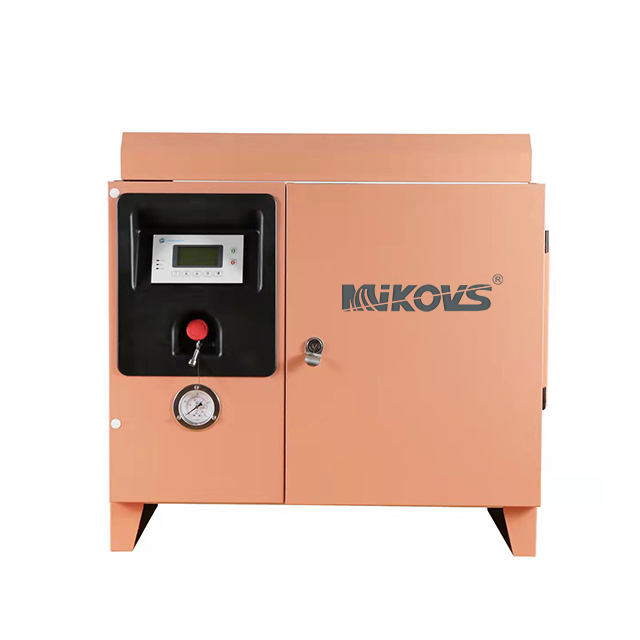Drying process of cold dryer and aftercooler in compressed air
All atmospheric air contains water vapor: more at high temperatures and less at low temperatures. When air is compressed, the density of water increases. For example, a compressor with an operating pressure of 7 bar and a flow rate of 200 l/s can release 10 l/h of water in the compressed air pipeline from 20°C air with a relative humidity of 80%. To avoid interference with condensation in pipes and connecting equipment, the compressed air must be dry. The drying process is implemented in the aftercooler and drying equipment. The term “pressure dew point” (PDP) is used to describe the water content in compressed air. It refers to the temperature at which water vapor begins to condense into water at the current operating pressure. A low PDP value means there is less water vapor in the compressed air.
A compressor with an air capacity of 200 liters/second will produce about 10 liters/hour of condensed water. At this time, the compressed air is 20°C. Thanks to the use of aftercoolers and drying equipment, problems caused by condensation in pipes and equipment are avoided.
Relationship between dew point and pressure dew point
Something to remember when comparing different dryers is not to confuse atmospheric dew point with pressure dew point. For example, the pressure dew point at 7 bar and +2°C is equal to the normal pressure dew point at -23°C. Using a filter to remove moisture (lower the dew point) does not work. This is because further cooling causes continued condensation of water vapor. You can choose the type of drying equipment based on pressure dew point. When considering cost, the lower the dew point requirement, the higher the investment and operating expenses of air drying. There are five technologies for removing moisture from compressed air: cooling plus separation, overcompression, membrane, absorption and adsorption drying.
aftercooler
An aftercooler is a heat exchanger that cools hot compressed gas, allowing water vapor in the hot compressed gas to condense into water that would otherwise condense in the piping system. The aftercooler is water-cooled or air-cooled, usually with a water separator, which automatically drains water and is close to the compressor.
Approximately 80-90% of the condensed water is collected in the water separator of the aftercooler. The temperature of the compressed air passing through the aftercooler will generally be 10°C higher than the temperature of the cooling medium, but may be different depending on the type of cooler. Almost all stationary compressors have an aftercooler. In most cases, the aftercooler is built into the compressor.
Different aftercoolers and water separators. The water separator can separate condensed water from compressed air by changing the direction and speed of the air flow.
Cold dryer
Freeze drying means that compressed air is cooled, condensed and separated into large amounts of condensed water. After the compressed air has cooled and condensed, it is heated to room temperature again so that condensation does not occur again on the outside of the ductwork. The heat exchange between the compressed air inlet and discharge can not only reduce the compressed air inlet temperature, but also reduce the cooling load of the refrigerant circuit.
Cooling compressed air requires a closed refrigeration system. The refrigeration compressor with intelligent calculation control can greatly reduce the power consumption of the refrigeration dryer. Refrigerant drying equipment is used for compressed gas with a dew point between +2°C and +10°C and a lower limit. This lower limit is the freezing point of condensed water. They can be a separate device or built into the compressor. The advantage of the latter is that it occupies a small area and can ensure the performance of the air compressor it is equipped with.
Typical parameter changes for compression, post-cooling and freeze-drying
The refrigerant gas used in refrigerated dryers has a low global warming potential (GWP), which means that when the desiccant is accidentally released into the atmosphere, it is not likely to cause global warming. As stipulated in environmental legislation, future refrigerants will have lower GWP values.
The content comes from the Internet. If there is any infringement, please contact us


